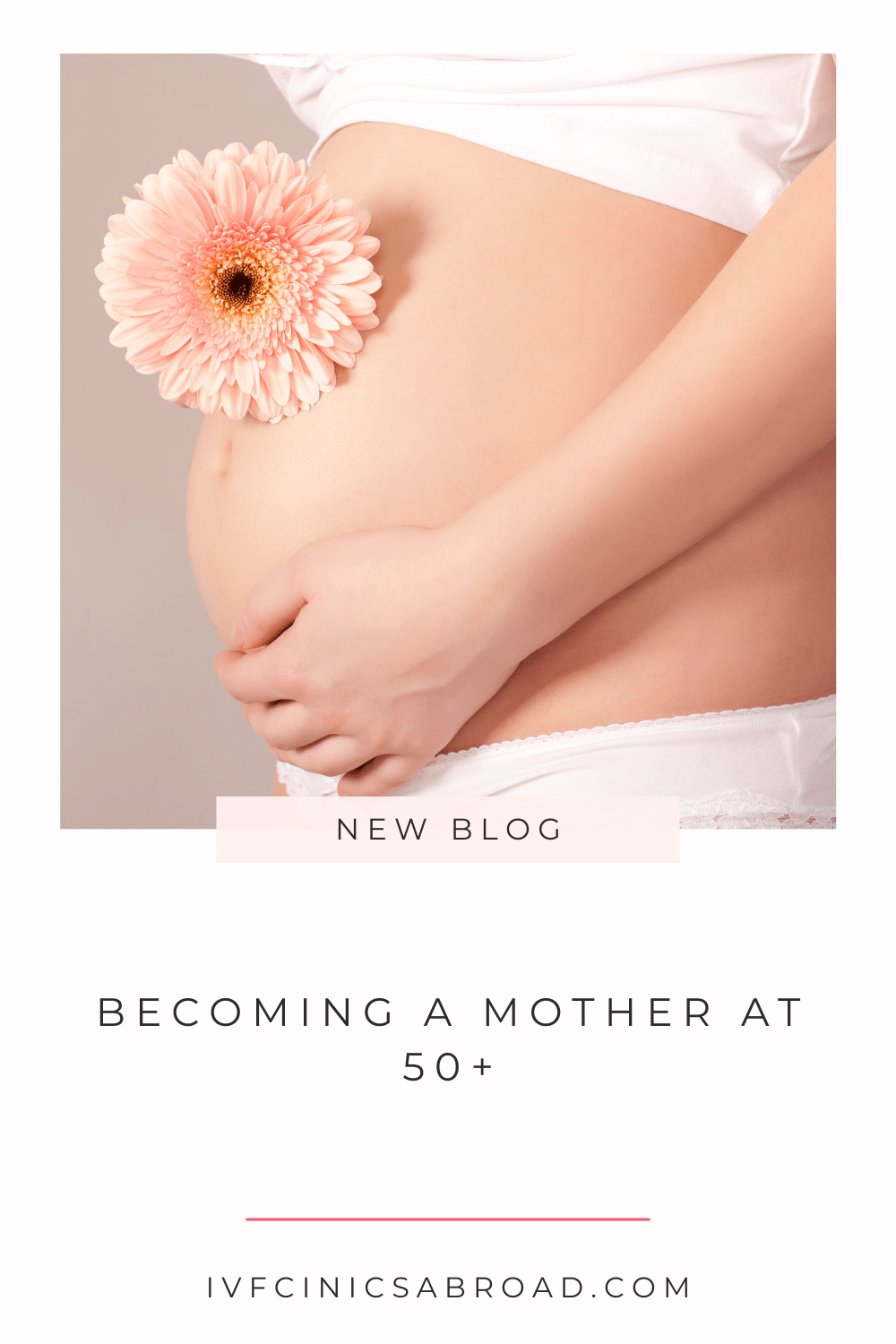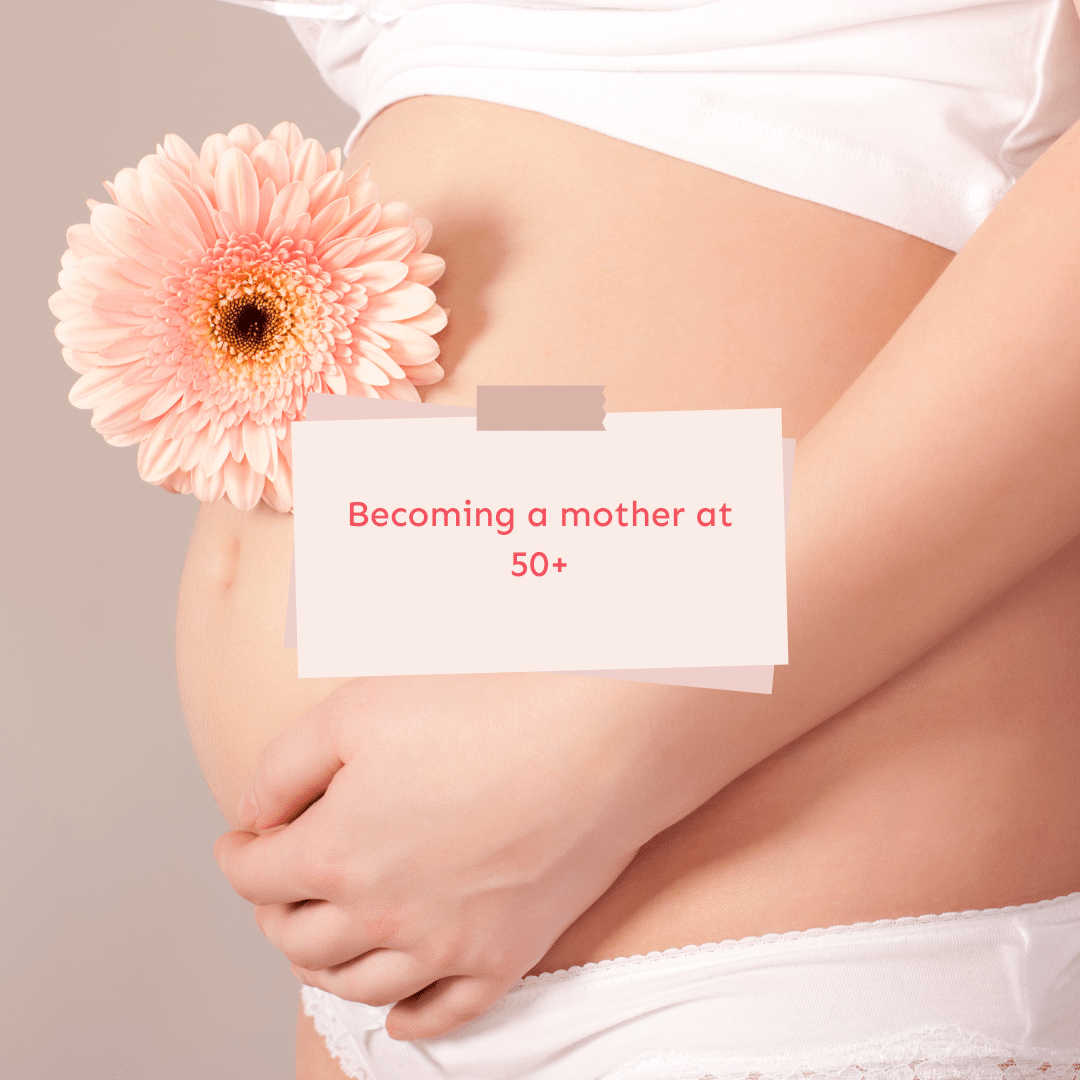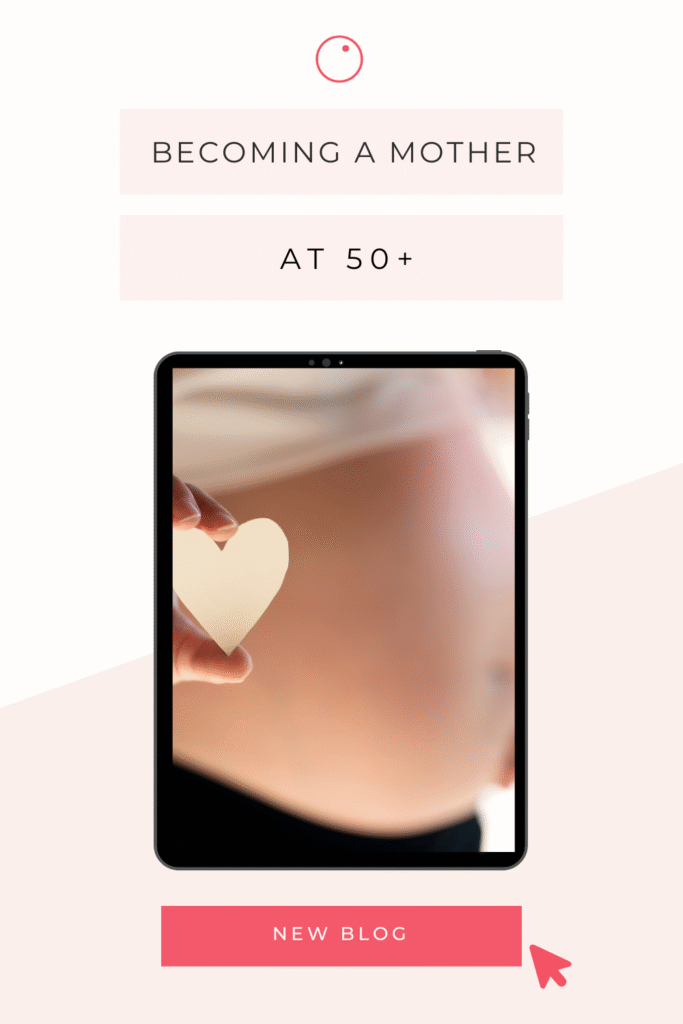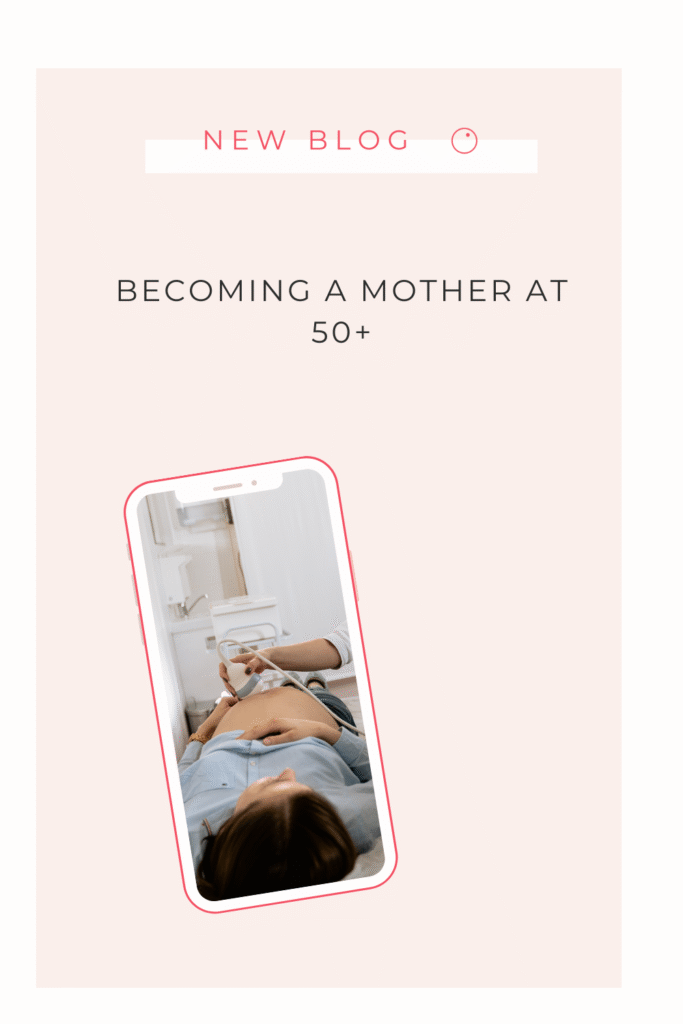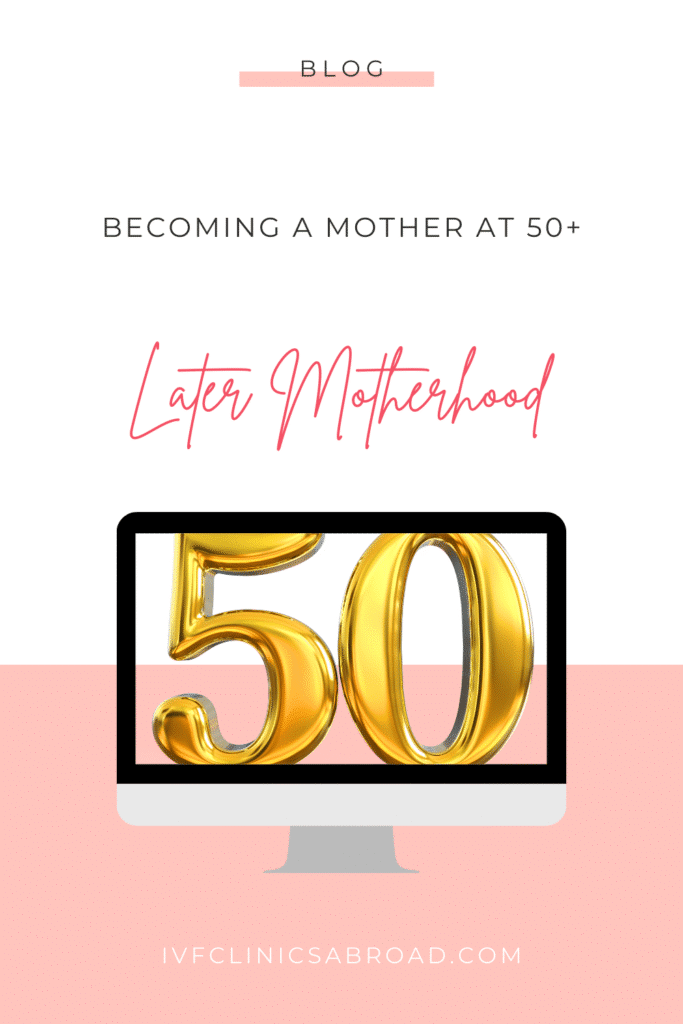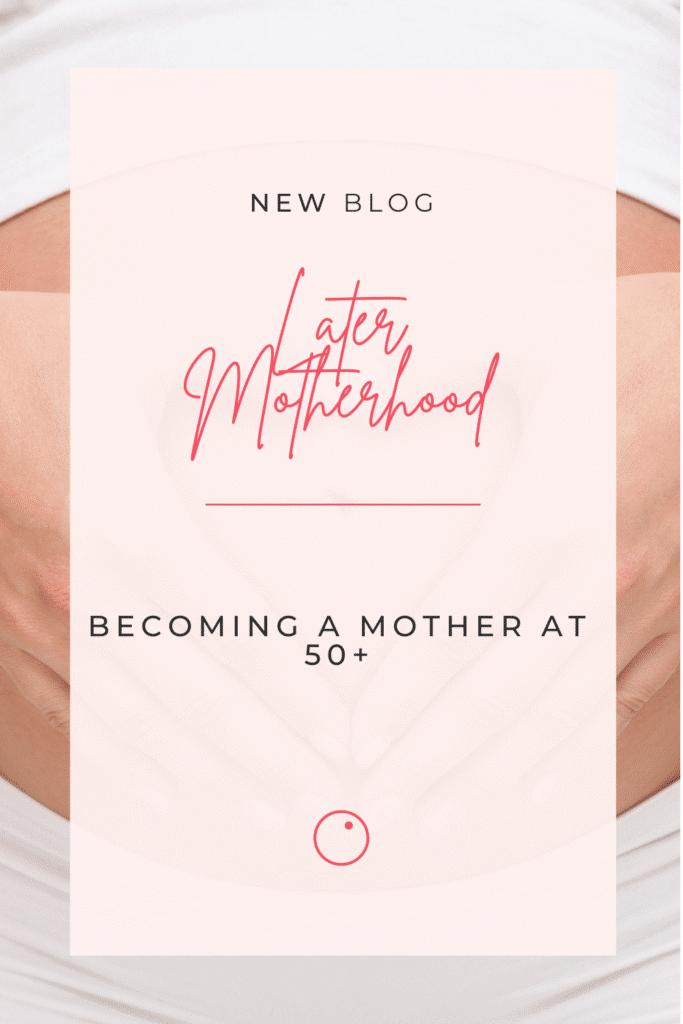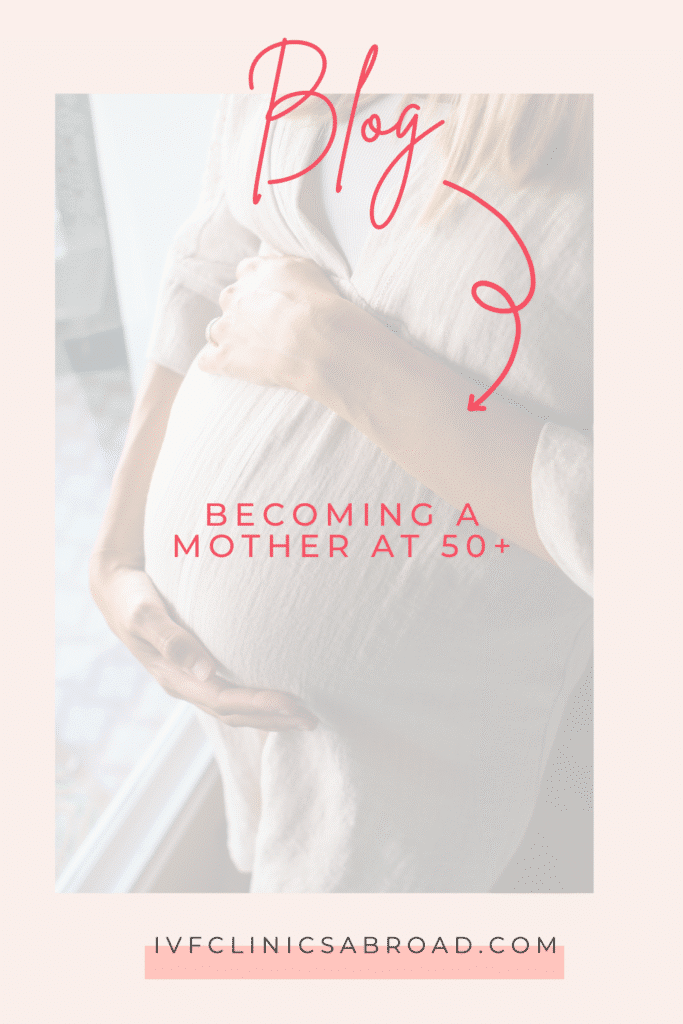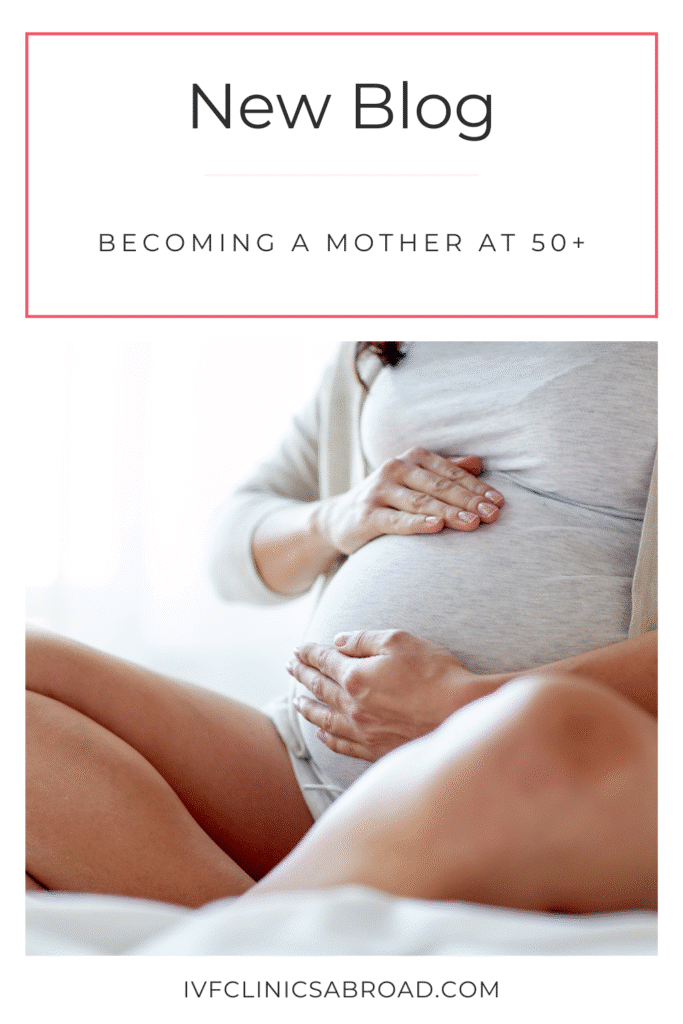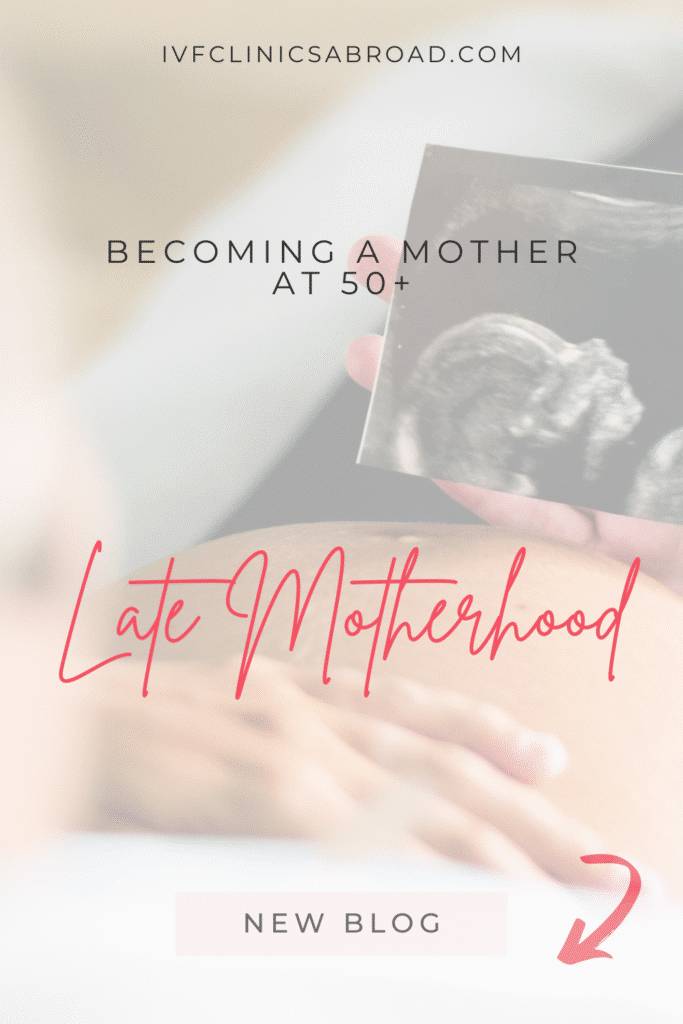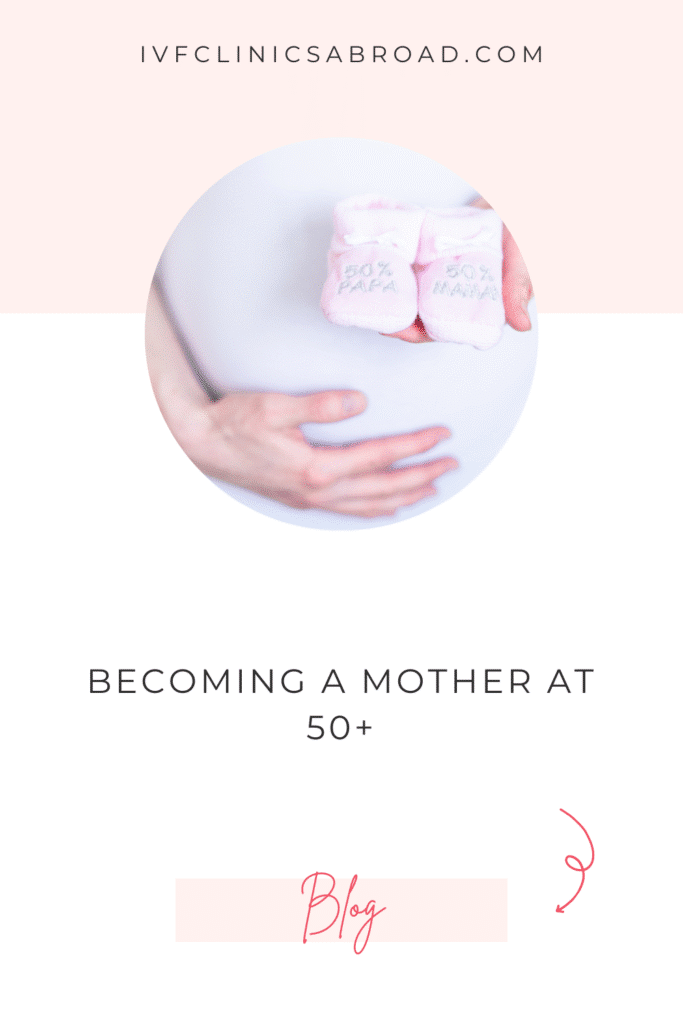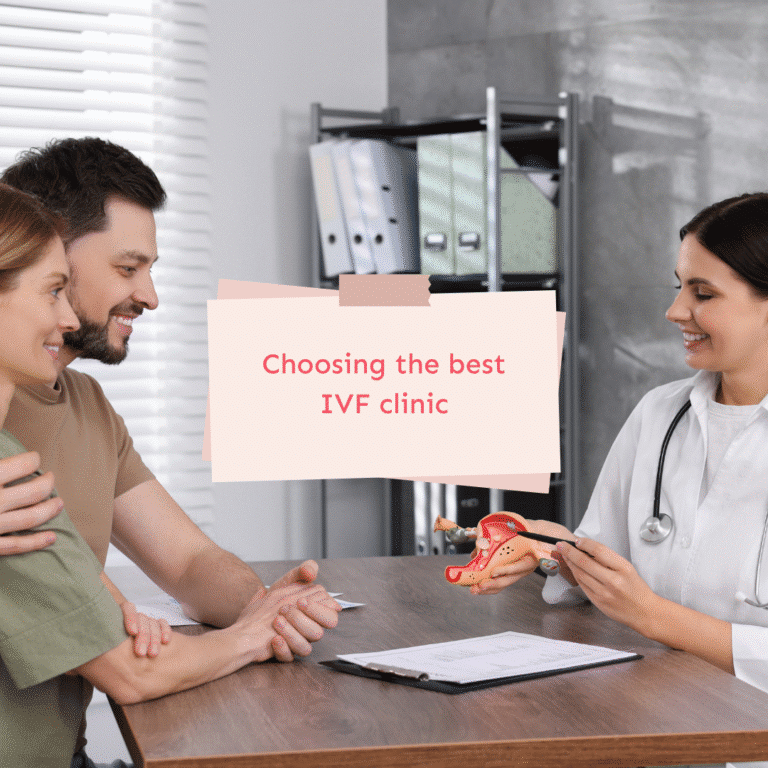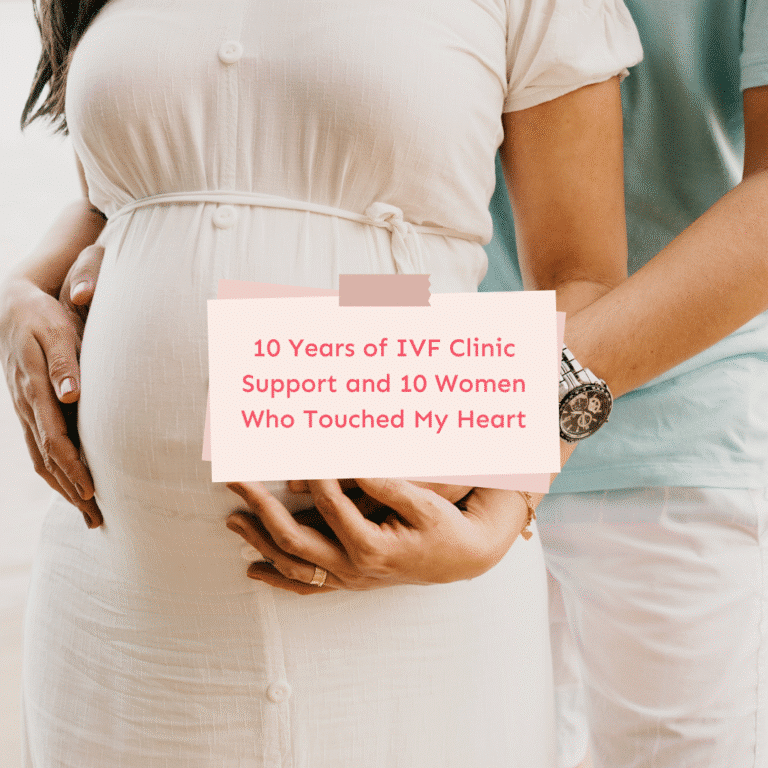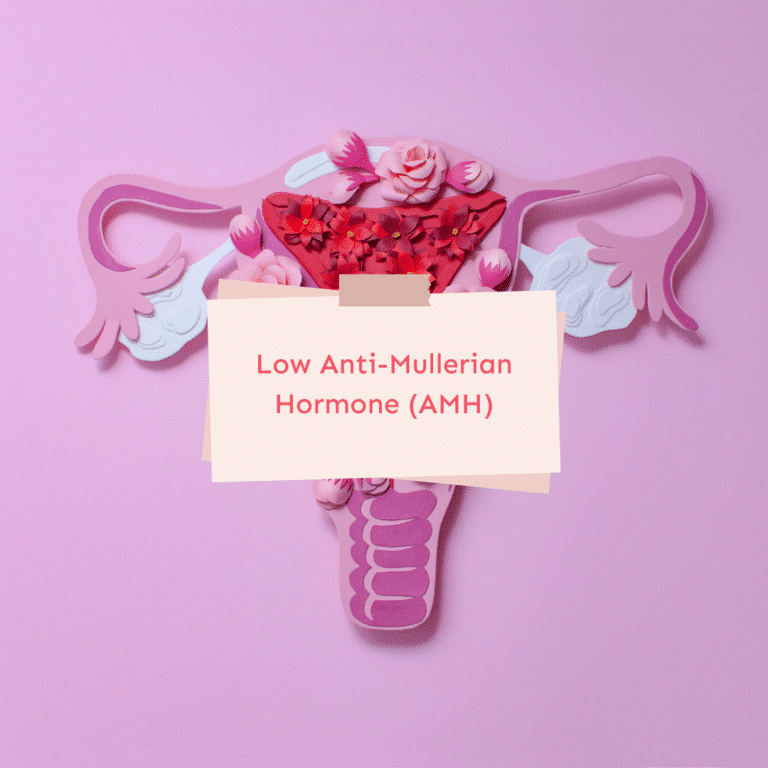Becoming a mother later in life – what you should know about having a baby at 50+
What becoming a mother at 50 really means
If you’re considering becoming a mother at the age of 50 or beyond, you’re not alone – and you’re not reckless. In fact, more women than ever are making this choice consciously, after years of reflection, life experience and often a stable career or home situation. But the reality of motherhood later in life depends heavily on where you live, what kind of medical support is available, and how well-informed your decisions are.
In countries like Germany and Switzerland, the legal situation is strict: egg donation is completely forbidden, regardless of age. That means women who want to become pregnant with a baby after 50 must travel abroad – and they do. In Switzerland, for example, 88 babies were born to women over 50 in a single year (2022) – a striking figure in a country with just 9 million residents. These women didn’t get pregnant naturally by chance. They made a deliberate decision, travelled abroad for treatment, and went through medical screening and legal complexity to make it happen.
The stories behind these numbers are rarely told. Most women do not speak publicly about their experience – not even to close family or friends. Late motherhood remains highly stigmatised, especially when it involves donor eggs or embryos. But the growing number of births speaks for itself: women in their 50s are quietly and successfully becoming mothers, often after years of waiting, trying, or simply not finding the right path earlier in life.
Why age 50 is a legal limit in many countries
In most European countries, the upper legal age for IVF is either 49 or 50. That means even if you are healthy and ready, clinics in those countries are not allowed to treat you once you cross that line. These age limits are not always based on science – they are often political or cultural. In some places, they reflect outdated views about family structure or maternal age. For women aged 50 and above, this means that options are limited – and the choice of destination becomes crucial.
How the law differs in Spain, Greece and Northern Cyprus
A small number of countries still allow treatment after the age of 50 – but only under strict conditions. In Spain, a few private clinics may accept women up to 54, but this is rare and handled on a case-by-case basis. In Greece, the legal upper limit is 54, and several fertility clinics are familiar with working with women in their early 50s. In Northern Cyprus, the most flexible destination, IVF is legally permitted up to around age 56 – provided the woman passes a thorough medical screening. This includes tests by a cardiologist, gynaecologist, often a mammogram, and sometimes even a psychologist. If these are passed, fertility treatment can legally go ahead – and clinics often offer multilingual teams, large donor databases, and options for anonymous or open donation.
What the Swiss press reports about late motherhood
A widely-read article published in a major Swiss newspaper in 2024 brought the topic into public view: “Immer mehr Frauen bekommen Kinder, wenn Gleichaltrige bereits Enkel in die Arme schliessen.” The article shared not only the statistics (88 births over age 50 in 2022), but also expert perspectives from Swiss fertility doctors. Their message was clear: spontaneous pregnancy after 50 is biologically near impossible – these births were all made possible through egg or embryo donation. The press coverage also warned that celebrity pregnancies at this age create false expectations. Behind almost every story of a “miracle pregnancy” at 50 is a structured and often expensive IVF journey abroad.
The article also touched on something deeper: the silence. Many of these women never tell anyone how their baby was conceived. The stigma around donor conception, age, and “unusual” motherhood is still strong – and yet, the reality is shifting. Quietly, steadily, women are reshaping what motherhood in your 50s can look like.
Medical requirements and screening before IVF
When you are considering pregnancy after 50, one of the most important steps is the medical screening. This is not about discouraging you, but about making sure that your body is ready for the journey ahead. Even if you feel fit and healthy, pregnancy in your 50s places new demands on your heart, circulation and overall stamina. Clinics that treat women in this age group will only accept you once they are confident that you can safely carry a pregnancy. That is why the first part of the process is often more thorough than what younger patients experience.
What tests you’ll need before being accepted for treatment
The standard list of tests usually includes a full blood panel to check hormones, blood sugar and cholesterol, as well as blood pressure and heart function. A mammogram is often required, particularly in Northern Cyprus, and in some cases you may also need an approval from an internist or cardiologist. These measures are not intended to create barriers but to reduce the risk of complications like gestational diabetes, pre-eclampsia or circulatory problems later in pregnancy. In some clinics, especially for women over 50, a psychological consultation is also part of the protocol, ensuring that you have emotional support for the challenges ahead. Once all these results are reviewed, the medical team will confirm whether you can move forward.
How clinics assess your health, uterus and emotional readiness
The condition of your uterus is a key factor in whether treatment can be offered. A simple ultrasound and endometrial measurement will usually show if the lining is receptive enough for embryo implantation. Doctors also evaluate your overall health, including weight, blood pressure and any history of surgery or illness that could make pregnancy more difficult. The aim is not to exclude you, but to make sure the pregnancy is as safe as possible. Clinics will also ask about your support system at home, because recovery after birth, especially if you need a caesarean, requires practical help. Women who are well-prepared and realistic often find this process reassuring rather than intimidating.
What to expect from embryo transfer at this age
Once you have been cleared for treatment, the next step is preparing your body for embryo transfer. This involves hormonal medication to build the endometrium so that it can accept the embryo. The protocol is usually gentle, with careful monitoring through ultrasound. At this age, doctors almost always recommend transferring a single embryo to reduce the risks associated with twins or multiple pregnancies. The embryo itself will come from an egg donor or embryo donation, fertilised with either your partner’s sperm or a sperm donor. The actual transfer is quick and painless, done in the clinic without anaesthesia. After the transfer, you will continue medication for several weeks to support implantation and early pregnancy.
“I often tell my clients that becoming pregnant at 50 and beyond is rarely the problem – the real question is how you want to live as a mother for the next twenty years, and how you will manage that journey.”
Nathalie Wiederkehr
Practical realities of getting pregnant later in life
Even when the medical side is under control, becoming pregnant in your 50s also brings a set of very practical questions. These are not about whether you are capable of carrying a pregnancy, but how life with a newborn will look once the baby arrives. For some women, these realities feel daunting. For others, they are part of what makes late motherhood more intentional and more deeply valued.
Health risks like gestational diabetes and high blood pressure
Pregnancy in your 50s is more likely to come with medical complications than in your 30s or 40s. Conditions such as gestational diabetes and high blood pressure are more common, and many women will be advised to deliver by caesarean rather than attempting a vaginal birth. This does not mean that a healthy outcome is unlikely, but it does mean that regular monitoring, medication and sometimes hospitalisation are part of the process. It is wise to expect extra check-ups and to accept that your pregnancy will be treated as high risk by default. Knowing this in advance can reduce anxiety and help you focus on what matters – the baby you are bringing into the world.
Planning for support, finances and energy after birth
Beyond the medical aspects, the day-to-day reality of raising a child at 50 is different. Sleepless nights, constant feeding and the physical recovery after a c-section can be exhausting. This is why planning for support is essential, whether that means involving a partner, family, friends or professional help. Financial planning also becomes more important, especially if you are already thinking about retirement while welcoming a newborn. None of these challenges are reasons not to go ahead – but facing them honestly makes the transition smoother. Many older mothers report that their experience, stability and financial independence make them feel far more ready than they did in their younger years.
Why some women in their 50s are the most prepared mothers
While risks and challenges exist, many women who give birth in their 50s describe late motherhood as a strength. Having watched friends raise children earlier, they often feel more relaxed about small worries and more focused on what truly matters. They are not trying to balance a first pregnancy with the demands of building a career, and many have more stability in their relationships or living situations. Some are single by choice, ready to raise a child on their own terms. Others see their baby as a long-awaited addition to a family. What unites them is a deep sense of clarity – the feeling that this child is not accidental, but wanted with full awareness of the responsibilities that come with being an older mother.
What success looks like – and where to start
When women talk about pregnancy after 50, the question is always the same: is it really possible? The honest answer is yes – but almost never with your own eggs. Success depends on donor eggs or embryo donation, and the age of the donor, not on whether you are 50, 52 or even 54. That is why the results in experienced clinics can be surprisingly consistent across women aged over 50, as long as the uterus is healthy and implantation works as expected.
In Switzerland, official statistics show that in 2022 there were 88 births to women over 50 – in a population of just 9 million. These numbers prove that women in their 50s are not an exception anymore. Many older mothers are now quietly expanding their families later in life, often after years of trying to conceive in their 40s. For some it is their first pregnancy, for others it is a second child after raising older children. What unites them is the determination to become pregnant even when others thought it was no longer possible.
Why success rates depend on donor eggs, not your age
If you want a baby later in life, the path usually involves a round of IVF with donor eggs or sometimes embryo donation. These eggs are fertilised with sperm from your partner or a sperm donor, and the embryo transfer is done once the lining of your uterus is ready. Clinics recommend single embryo transfer to reduce risks, but even with just one, the chance of success is far higher than if you tried to use your own eggs at the age of 50. Some women also choose frozen eggs stored earlier in life, but this is still rare compared to donor treatment. The outcome is clear: using young donor eggs levels the playing field, giving women in their 50s almost the same chances as those in their 30s.
How many women over 50 actually give birth
Celebrities like Janet Jackson, who was 50 when she gave birth to her first child, or Naomi Campbell, who recently welcomed another baby in her 50s, make headlines. Senator Tammy Duckworth, who conceived using IVF and gave birth to her second child at the age of 50, has also been open about her journey. These high-profile examples matter because they normalise late motherhood, but they can also be misleading. The public is rarely told that these pregnancies almost always relied on egg donation or embryo transfer. Behind the headlines, the statistics tell the real story: women having babies later in life is still unusual, but it is growing steadily each year.
When and how to get personalised help for your case
Every woman’s situation is unique. Some women having children in their 50s are already parents, others want a baby for the first time. Some are partnered, others single and considering a sperm donor. Your health during pregnancy, your support network, and your long-term plans all matter more than the number in your passport. If you want to become a mother after the age of 50, the first step is to understand the legal age limits and find out where treatment is still possible. The second step is to talk to a clinic that specialises in women over 50, with experience in late 40s and 50s plus pregnancies.
Conclusion and next steps
Becoming a mother later in life is not a fantasy – it is happening, right now, for women over 50 across Europe. With donor eggs, embryo transfer and the right medical care, giving birth in your 50-plus can be safe and successful. There are risks, yes, but there are also many older mothers proving every day that motherhood does not have to end at 40. If you are thinking about family later in life, it might be time to explore your options abroad.
If you would like to know where IVF with donor eggs or embryo donation is legally possible after 50 – and what the real costs and success rates look like – you can download my guide to IVF destinations in Europe. The guide includes examples from clinics in Northern Cyprus with detailed prices and outcomes. And if you want to talk through your own situation, you can also book a private consultation with me.
